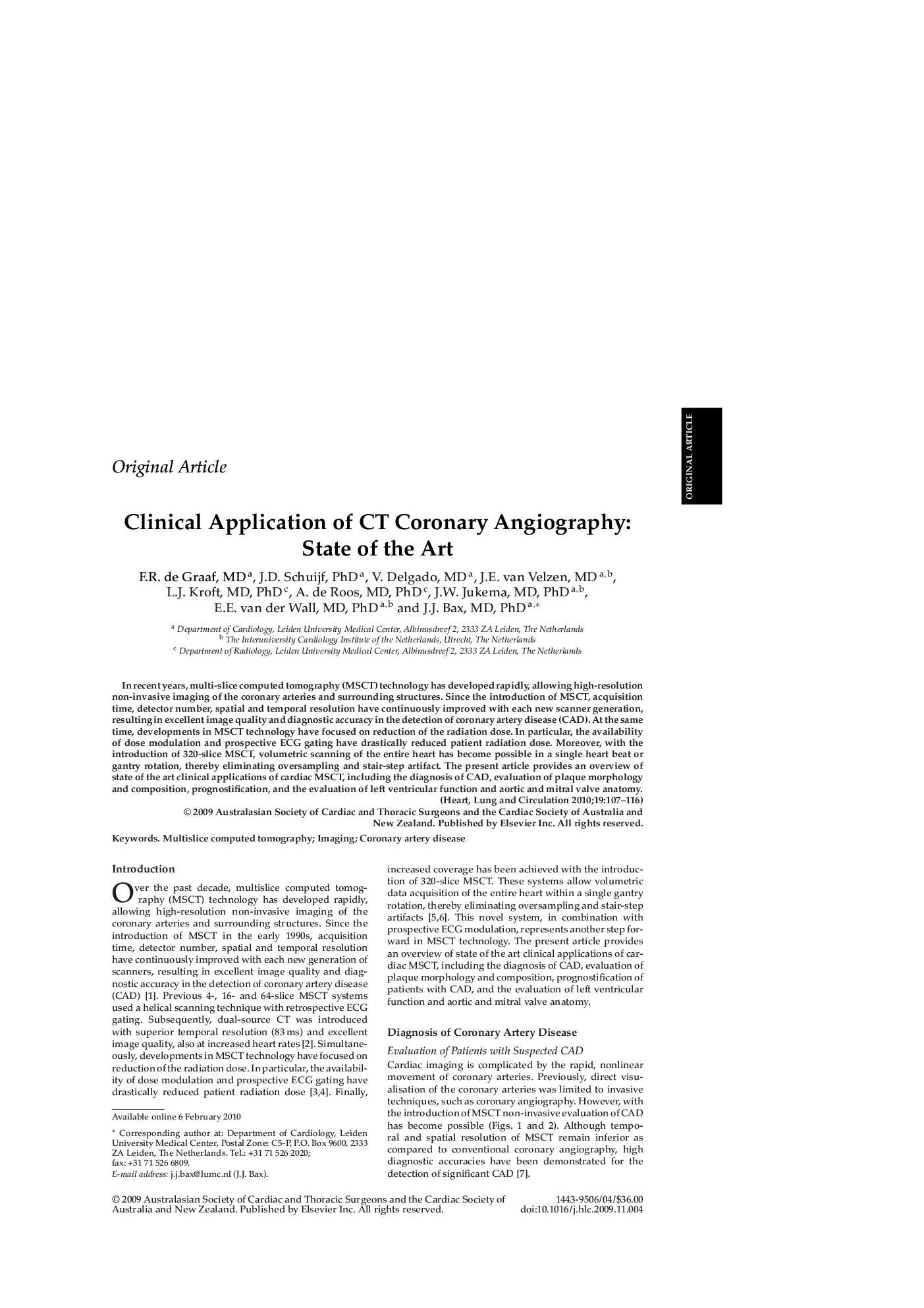| Article ID | Journal | Published Year | Pages | File Type |
|---|---|---|---|---|
| 2920979 | Heart, Lung and Circulation | 2010 | 10 Pages |
In recent years, multi-slice computed tomography (MSCT) technology has developed rapidly, allowing high-resolution non-invasive imaging of the coronary arteries and surrounding structures. Since the introduction of MSCT, acquisition time, detector number, spatial and temporal resolution have continuously improved with each new scanner generation, resulting in excellent image quality and diagnostic accuracy in the detection of coronary artery disease (CAD). At the same time, developments in MSCT technology have focused on reduction of the radiation dose. In particular, the availability of dose modulation and prospective ECG gating have drastically reduced patient radiation dose. Moreover, with the introduction of 320-slice MSCT, volumetric scanning of the entire heart has become possible in a single heart beat or gantry rotation, thereby eliminating oversampling and stair-step artifact. The present article provides an overview of state of the art clinical applications of cardiac MSCT, including the diagnosis of CAD, evaluation of plaque morphology and composition, prognostification, and the evaluation of left ventricular function and aortic and mitral valve anatomy.
